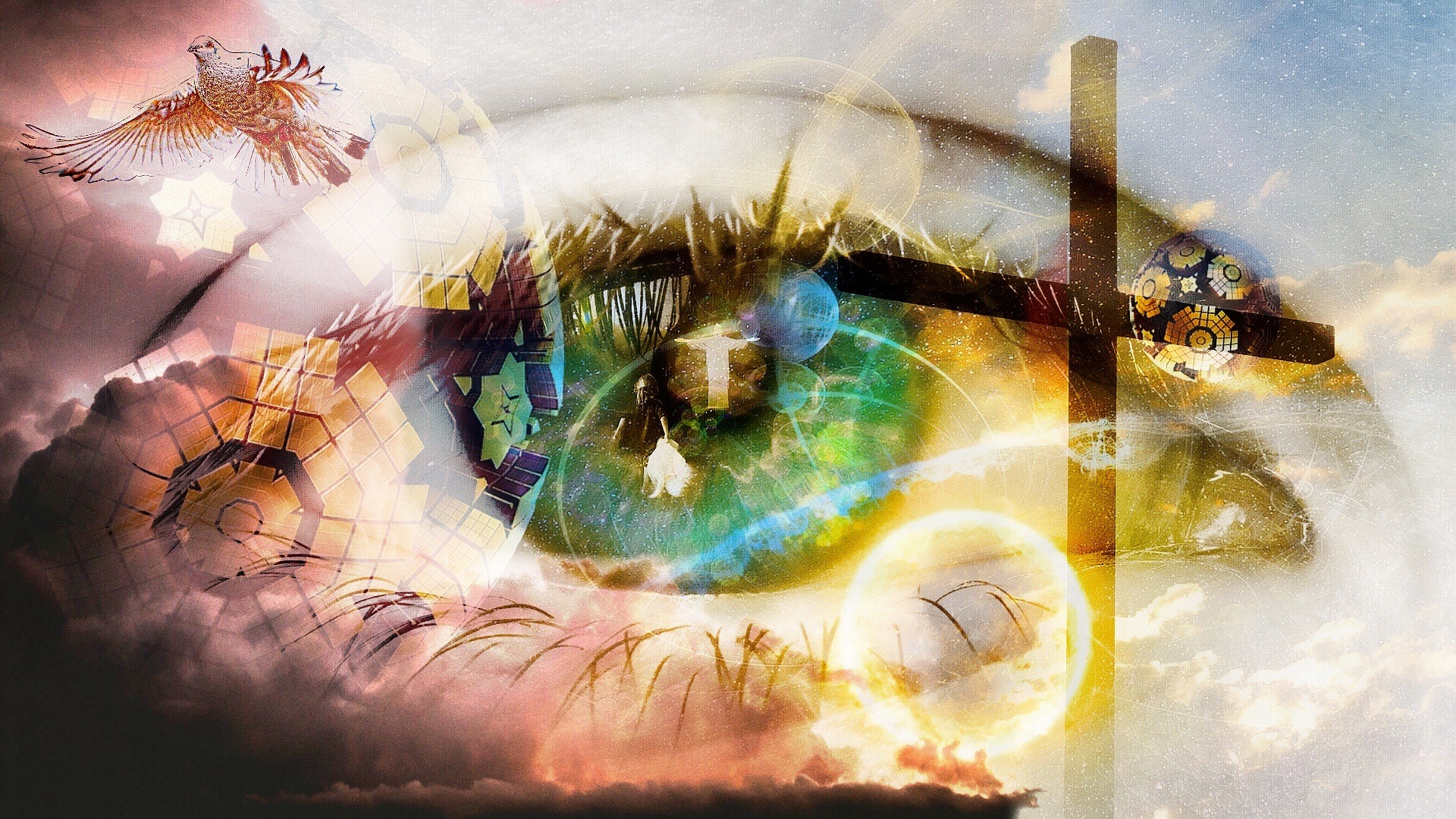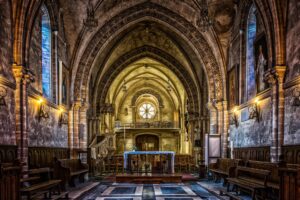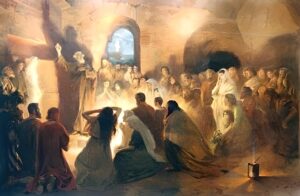Many modern Catholics cringe at the word myth, assuming it equates to “a made-up story.” Yet figures like Fr. Dwight Longenecker and Joseph Campbell have highlighted that “myth” can communicate profound truth, especially within the sacramental life of the Church. “Myth” in this context does not suggest fiction; rather, it points to a deeper reality—one woven into centuries of Scripture, liturgy, and devotion.
Table of Contents
Defining “Mythic” in a Catholic Framework
The Catholic Use of ‘Myth’
Catholic tradition recognizes that certain stories, symbols, and devotions convey abiding truths about God, creation, and human destiny. Far from “false tales,” these mythic currents guide believers toward transcendent meaning.
Unlike purely allegorical tales, Christian “mythic” patterns have a basis in salvation history, culminating in the Incarnation. The life, Passion, and Resurrection of Jesus embed the mythic archetypes—sacrifice, redemption, and triumph over evil—within real events, sanctifying them with divine revelation.
Scriptural Typology and Mythic Archetypes
The Passover Lamb, Noah’s Ark, and the Suffering Servant are archetypal images that foreshadow Christ. These narratives carry universal themes of judgment, deliverance, and covenant; in Catholic reading, they point to a more glorious reality fulfilled in Jesus.
Jesus not only mirrors ancient hero narratives—He transfigures them. In Him, the timeless pattern of death and rebirth becomes a unique, historical event: the God-Man conquers death in a way that reshapes human destiny.
Key Voices
- St. Augustine’s Approach – St. Augustine recognized layered meanings in biblical narratives—literal, moral, and spiritual. This multi-dimensional reading keeps alive the Church’s mythic sense, unlocking riches that address both the intellect and the heart.
- Modern Reflections – Building on these insights, Fr. Dwight Longenecker observes that despite cultural changes, “the Catholic Church is still there bringing the great myths alive and applying them to ordinary people’s lives.”
Dispelling the Misconception: “Mythic” ≠ “Untrue”
Myth vs. Fabrication
Genuine myth moves beyond surface details to convey transcendent truths. The Passion narrative, for instance, is grounded in historical reality while pointing to cosmic redemption.
Catholic “mythic” traditions—be they about the Crucifixion or saints’ miracles—stand on verifiable events but are illumined by spiritual significance. The “mythic” dimension is the Church’s way of highlighting truths that shape souls, not dismissing factual history.
How Mythic Language Reveals Deeper Truths
- Universal Themes – Every culture’s stories echo sacrifice, redemption, and rebirth. In Catholicism, these find perfect fulfillment in Christ, who descends into human suffering to conquer death from within.
- Emotional and Imaginative Engagement – Rituals and devotions give Catholics a tactile means of “living the myth.” Through solemn liturgies, icons, and sacramentals, hearts and imaginations awaken to the sacred mysteries that pure reason alone struggles to express.
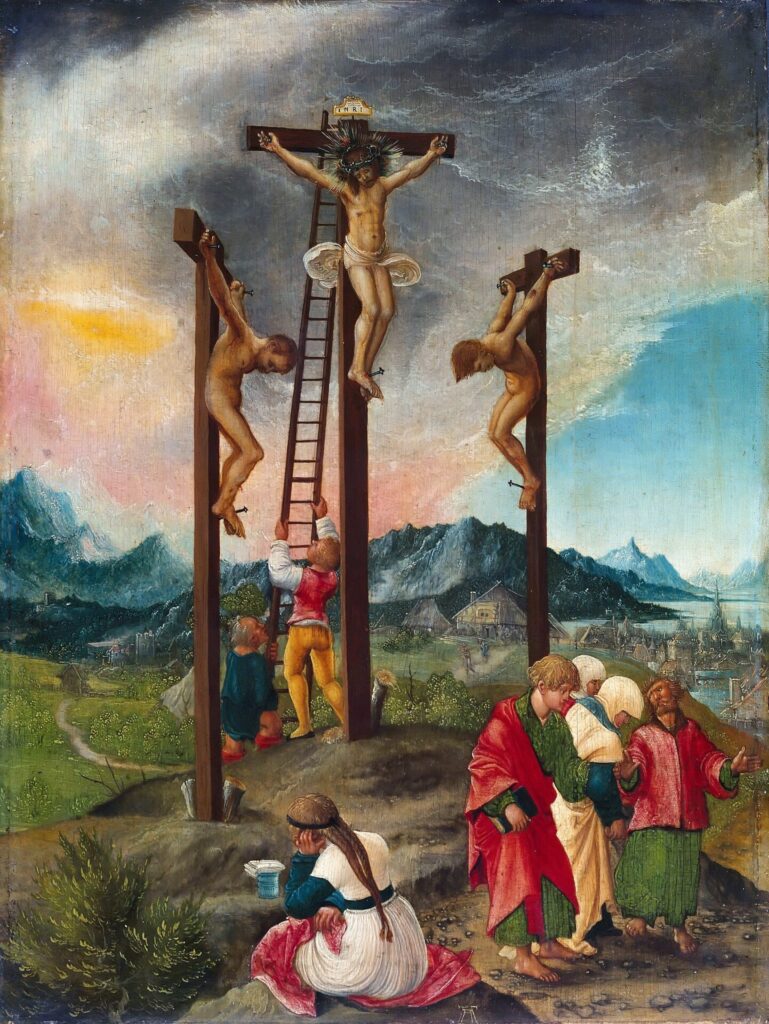
Living the Sacred Story: Examples from Catholic Practice
Liturgical Symbolism
- Candles and Incense – Each candle flicker and rising plume of incense signifies the intersection of heaven and earth—light piercing darkness, prayers ascending toward God.
- The Tridentine Mass and Other Traditional Forms – Traditional Latin rites are renowned for their sublime gestures, chant, and vestments, preserving a timeless “mythic” continuity. They root worshipers in the same cosmic drama shared by generations of saints and martyrs, linking modern believers with centuries of living tradition.
Saints’ Miracles and Legends
- Mythic Signposts of God’s Action – Miraculous stories—though sometimes expressed in legendary detail—bear witness to God’s intervention in history. They illustrate how divine grace triumphs in the most mundane corners of life, revealing glimpses of the eternal kingdom at work.
- The Communion of Saints – This spiritual “cloud of witnesses” unites believers across time and space, showcasing models of holiness who reveal virtue’s heroic potential. Their legends remind the faithful that sanctity is neither remote nor unattainable.
Marian Devotion
- Mary as Archetype – Catholic tradition hails Mary as the “New Eve,” whose obedient fiat (yes) participates in salvation history. She embodies the ideal disciple—cooperating in Christ’s redemptive work.
- Popular Expressions – From rosary recitations to global Marian shrines, devotion to Mary forms one of the Church’s most accessible portals into the mythic dimension. Here, the faithful experience her maternal guidance in a tangible way—mirroring the scriptural archetypes of nurturing and intercession.
The Fruit of the Mythic Imagination
Spiritual Formation and Moral Insight
Humans intuit truth through narrative and ritual. Myths activate our moral imagination, helping us internalize virtues such as humility, courage, and charity. In a secular age, mythic language rekindles reverence, challenging a purely materialistic worldview. The Church’s rituals, icons, and devotions summon believers to see the world as God’s handiwork, teeming with hidden grace.
Cultural and Civilizational Impact
As historian Tom Holland argues in Dominion, Christianity’s “mythic” framework—a crucified God bringing salvation to the lowly—profoundly shaped ideals of compassion, human dignity, and justice across Europe and beyond. Further, Catholic devotions, Mass forms, and grand processions transmit a sense of cosmic drama and communal identity. They remind society of its roots in a supernatural story, inviting cultures to reawaken to the transcendent dimension.
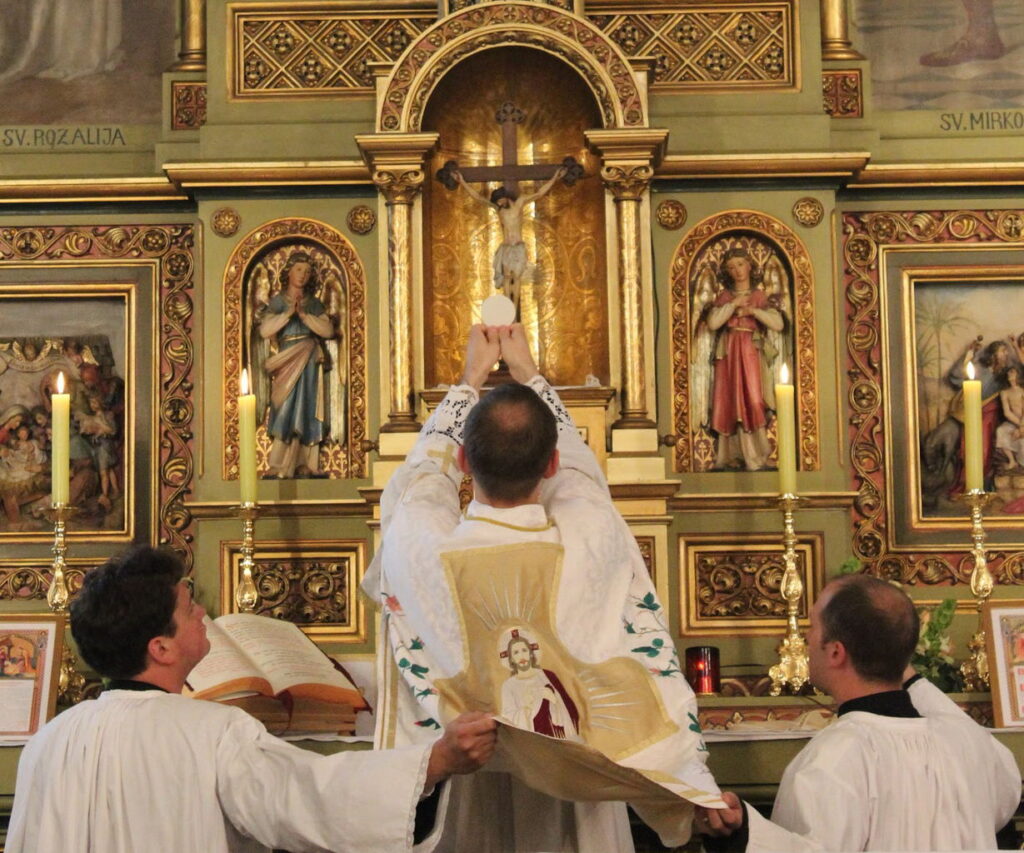
Practical Ways to Reclaim the Mythic Dimension
Deeper Participation in the Liturgy
- Engagement of Senses – Rediscover the ancient forms of worship—incense, Gregorian chant, and solemn processions. By immersing our senses, we enter the drama of salvation in a fuller, more contemplative manner.
- Catechesis on Symbolism – Parish classes or small groups that explain the background of each liturgical gesture, prayer, and vestment can open hearts to the mystical depth beneath the rubrics.
Immersion in Sacred Scripture and Tradition
- Lectio Divina and Typological Readings – Prayerful reflection on Scripture—especially through the lens of Old Testament foreshadowings of Christ—helps uncover the layers of biblical meaning, fueling awe and devotion.
- Teaching the Lives of Saints – Incorporate saintly narratives (and yes, even their legends) into catechetical programs. These stories ignite hearts with a sense of God’s ongoing action, calling believers to emulate heroic virtue in everyday life.
Personal Devotions and Artistic Expression
- Rosary, Icons, and Marian Consecration – Catholics yearning for a deeper sense of the sacred can find it in time-honored devotions. These focal points of piety expand the soul’s capacity to perceive God’s presence.
- Sacred Arts Revival – Encourage renewed creativity in painting, sculpture, and music that reflects the Church’s timeless patterns. Beauty, as an echo of the divine, enriches the faithful’s appreciation of truth.
Conclusion: Embracing Our Living Myth
Far from fanciful, Catholic “mythic” tradition anchors believers in Christ’s unchanging drama of redemption. By weaving scriptural archetypes, liturgical symbolism, saintly narratives, and Marian devotion into our spiritual tapestry, we reawaken to the divine realities coursing through everyday life. Recovering the “mythic” dimension in Catholicism—understood as a vessel of deeper truths—helps us see the faith’s sacramental vision with new eyes.
The call, then, is simple yet profound: reclaim our sacred story, one where the universal yearning for redemption meets the concrete reality of a God who entered human history. In so doing, we immerse ourselves in a timeless narrative that continues to shape hearts, cultures, and civilizations—proving that “mythic” does not mean “untrue,” but “unendingly true,” inviting the whole world into the wonders of a lived myth.

